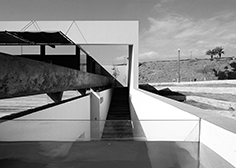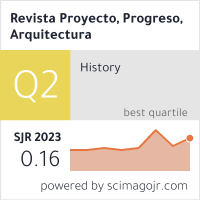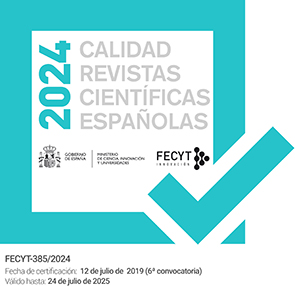INVENTION OF THE DESERT. ART AND ARCHITECTURE FROM THE PERUVIAN COAST
DOI:
https://doi.org/10.12795/ppa.2021.i25.01Keywords:
desert, utopia, Peruvian architecture, identity, landscape, LimaAbstract
We think about the Peruvian rainforest as vegetation and the Andes as topography, but we characterize the coast as a space or emptiness waiting to be defined. In the second half of the twentieth century, Peruvian artists and architects reflect on the desert areas far from the city forming a narrative about the landscape. The desert is conceptualized as an abstract entity, almost as a mirage of the reality that is being built in the city. The objective of the paper is to offer a reading about a landscape that has been idealized by high culture despite being a precarious urban reality that represents more than 60% of the extension of Metropolitan Lima, reinforcing the tension between the categories of center and outskirts. Beyond the plastic possibilities, a reading about the desert allows us to focus on a current perspective that helps to build a contemporary and equitable city, maintaining the spatial and social values corresponding to the landscape and the territory in which we live. Remember that Lima, the largest and most populous city in Peru, with almost 10 million inhabitants, is one of the largest metropolises in the world built on a desert.
Downloads
References
BARACCO, Juvenal. Espacio sin límites. Lima: Art Lautrec, 1990.
CACCIATORE, Francesco; FOTI, Fabrizio. Barclay & Crousse. Segnali di vita tra i due deserti. Siracusa: LetteraVentidue, 2012.
CASTILLO, Juan Manuel del. Lima la fértil: la inconsistencia del discurso de la ciudad-desierto. En: La Chimenea. Revista de arquitectura [en línea]. 14-12-2014 [consulta: 08-01-2021]. Disponible en: http://revistalachimenea.blogspot.com/2014/12/lima-la-fertil.html?utm_medium=website&utm_source=archdaily.pe.
CAVAGNARO, Franco. Más allá de la estética: Jorge Eduardo Eielson frente al legado prehispánico. En: Devenir, enero-junio 2017, n.º 7, pp. 101-116. ISSN: 2312-7562.
CLÉMENT, Gilles. Jardins, paysage et génie naturel. París: Collège de France, 2012.
COGORNO, Gilda; ORTIZ DE ZEVALLOS, Pilar. La Lima que encontró Pizarro. Lima: Taurus, 2018.
CORNER, James. Recovering Landscape. Essays in Contemporary Landscape Architecture. Nueva York: Princeton Architectural Press, 1999.
CROUSSE, Jean Pierre. El paisaje peruano. Landscape in Central Andes. Lima: Pontificia Universidad Católica del Perú, 2021.
CRUZ, Alberto; IOMMI, Godofredo. Ciudad abierta: de la utopía al espejismo. En: Revista Universitaria, 1983, n.º 9, pp. 17-25.
LÓPEZ, Miguel, ed. Rafael Hastings. El futuro es nuestro y/o por un pasado mejor 1983-1967. Lima: ICPNA, 2004.
LUDEÑA, Wiley. Con-cierto de-sierto barroco. En: ARQ, julio 2004, n.º 57, pp. 10-13.
MATTA, Raúl. «Asia» (Lima, Perú), barrios cerrados para vacaciones de lujo. En: L’Ordinaire des Amériques [en línea]. 2007 publicado el 6 de diciembre de 2016, n.º 207 [consulta: 07-02-2021]. Disponible en: http://journals.openedition.org/orda/3366; DOI: https://doi.org/10.4000/orda.3366.
MINISTERIO DEL AMBIENTE. La desertificación en el Perú. Cuarta Comunicación Nacional del Perú a la Convención de Lucha contra la Desertificación y la Sequía. Lima: Fondo Editorial del MINAM, 2011.
PADILLA, José Ignacio, ed. Nu/do. Homenaje a Jorge Eduardo Eielson. Lima: Pontificia Universidad Católica del Perú, 2002.
PROTZEL, Javier. Continuidades, hibridaciones y rupturas. En: América Latina Hoy, 2001, n.º 28, pp. 149-169. ISSN: 1130-2887.
RAMÍREZ NIETO, Jorge. Las huellas que revela el tiempo (1985-2011). Seminarios de Arquitectura Latinoamericana (SAL). Bogotá: Universidad Nacional de Colombia, 2013.
REBAZA SORALUZ, Luis. De ultramodernidades y sus contemporáneos. Lima: Fondo de Cultura Económica, 2017.
SALAZAR BONDY, Sebastián. El desierto habita en la ciudad. En: Guaraguao, 2004, n.º 18, pp. 169-175.

Downloads
Published
How to Cite
Issue
Section
License
Las ediciones impresa y electrónica de esta Revista son editadas por el Secretariado de Publicaciones de la Universidad de Sevilla, siendo necesario citar la procedencia en cualquier reproducción parcial o total.
Salvo indicación contraria, todos los contenidos de la edición electrónica se distribuyen bajo una licencia de uso y distribución “Creative Commons Atribución-NoComercial-SinDerivar 4.0 Internacional” ![]() . Puede consultar desde aquí la versión informativa y el texto legal de la licencia. Esta circunstancia ha de hacerse constar expresamente de esta forma cuando sea necesario.
. Puede consultar desde aquí la versión informativa y el texto legal de la licencia. Esta circunstancia ha de hacerse constar expresamente de esta forma cuando sea necesario.
Los autores/as que publiquen en esta revista aceptan las siguientes condiciones:
- Los autores/as conservan los derechos de autor y ceden a la revista el derecho de la primera publicación, con el trabajo registrado con la licencia de atribución de Creative Commons, que permite a terceros utilizar lo publicado siempre que mencionen la autoría del trabajo y a la primera publicación en esta revista.
- Los autores/as pueden realizar otros acuerdos contractuales independientes y adicionales para la distribución no exclusiva de la versión del artículo publicado en esta revista (p. ej., incluirlo en un repositorio institucional o publicarlo en un libro) siempre que indiquen claramente que el trabajo se publicó por primera vez en esta revista.
- Se permite y recomienda a los autores/as a publicar su trabajo en Internet (por ejemplo en páginas institucionales o personales) antes y durante el proceso de revisión y publicación, ya que puede conducir a intercambios productivos y a una mayor y más rápida difusión del trabajo publicado (vea The Effect of Open Access).








